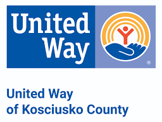HOW
A "Rae of Sunshine" in Every Heart!

How Will We Execute Our Initiatives
“‘What should we do then?’ the crowd asked. John answered, ‘Anyone who has two shirts should share with the one who has none, and anyone who has food should do the same.’”
Luke 3:10-11



COLLABORATIVE GOVERNANCE
We Plan To Execute Our Initiatives Through The Use Of...
Collaborative Governance
Here are the key elements of collaborative governance:
1. Multiple Stakeholders
It includes a variety of participants such as government bodies, non-governmental organizations (NGOs), businesses, citizens, and experts. These stakeholders work together to discuss issues, share ideas, and create solutions.
2. Shared Decision-Making
Decisions are not made unilaterally by a single authority. Instead, decisions are reached collectively, often through negotiation, consensus-building, or compromise.
3. Mutual Trust and Respect
For collaboration to succeed, there must be trust and mutual respect among participants. Building relationships is crucial for effective governance.
4. Transparency and Accountability
Collaborative governance processes are usually transparent, meaning that all participants and the public can understand how decisions are being made. This openness helps ensure accountability for the outcomes of decisions.
5. Inclusivity and Participation
All relevant stakeholders, especially those affected by the decision, should be involved. This process seeks to include voices from diverse groups, including marginalized or underrepresented communities.
6. Shared Resources and Responsibilities
Stakeholders pool their resources—whether financial, intellectual, or material—to work on solving issues. They also share responsibility for the outcomes, which encourages commitment and cooperation.
7. Problem-Solving Orientation
Rather than just debating policies or strategies, collaborative governance focuses on solving specific problems in a way that reflects the interests and needs of all involved parties.
8. Sustainability
Collaborative governance often aims at long-term solutions, ensuring that the outcomes not only address immediate needs but are also sustainable over time.
Benefits:
Better Decision-Making: By drawing on a wide range of expertise and perspectives, decisions can be more informed and well-rounded.
Enhanced Legitimacy: When citizens and stakeholders have a voice in the process, they are more likely to trust and support the outcomes.
Improved Outcomes: Collaboration often leads to more creative and innovative solutions to complex issues.
In essence, collaborative governance is about shared power and collective responsibility, where multiple groups come together to govern and make decisions that affect the community, region, or society at large.
Collaborative Governance is a decision-making process where multiple stakeholders, including government agencies, private organizations, nonprofit organizations, civil society groups, and sometimes citizens, work together to address public issues, make policies, and manage resources. It is a framework that emphasizes cooperation, shared decision-making, and joint problem-solving rather than a top-down, hierarchical approach.






Key Stakeholders
Nonprofit and Faith-Based Organizations: In Kosciusko County, several programs support low income households, many of which are spearheaded by faith-based organizations. Organizations such as Combined Community Services (CCS) provide food, clothing, and emergency financial assistance. Several local churches partner on initiatives such as food pantries and utility assistance programs, leveraging their extensive networks to address community needs.
Rae of Sunshine Charitable Foundation, Inc. is an independent organization and is not affiliated with, endorsed by, or sponsored by any of the companies whose logos appear below. All trademarks, service marks, logos, and brand names are the registered and/or unregistered property of their respective owners. The appearance of such marks on this site is for informational purposes only and does not imply any partnership, sponsorship, or endorsement. For further details regarding a specific entity, please click on the corresponding logo.
STAKEHOLDERS
Here's a short list of stakeholders, sorted alphabetically. More stakeholders will be added soon.
Legal Disclaimer:
© 2025. All rights reserved.
We are dedicated to making a difference through charitable initiatives. Explore our mission and make a donation today. Your support helps us bring light to those in need. Join us in our journey to spread kindness and hope.
MAILING ADDRESS:
Rae of Sunshine Charitable Foundation, Inc.
3600 Commerce Drive #1010
Warsaw, IN 46580
EMAIL:
TOLL-FREE NUMBER:
(866) 688-4RAE (4723)
Rae of Sunshine Charitable Foundation, Inc.
Your generous gift will bring hope to many. Please, donate now!


































